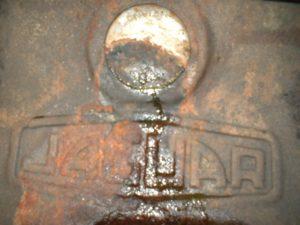Rinsing agents for the radiator: The cooling effect of a twenty-year-old radiator can be very much less than when it was new. This can be due to external pollution, but often the inside is also clogged up.
Not only ports and veins clog up
Filthiness in the system most often settles in the bottom of the radiator. And after a quarter of a century or more, so many compactly precipitated derrie can have been collected there that the circulation of the cooling water is reduced. In case of such doubts, also take a look at the water pump. So it seems like a good idea to flush the radiator. And then there is always someone who says 'you must do that against the current'. Maybe it feels good. But whether it helps?
Maybe a radiator flushing agent?
With European and Asian cars younger than from the mid-seventies we can write this nice idea on our bellies. The structure is such that with a garden hose not enough rinsing power is generated to achieve a really good result. Most classic radiator flushing agents are so cleaning that they are aggressive to light metal. The classic leak toppers use additives that respond to the solder seams, classic sources of leaks. There are also additives that work on the basis of finely ground copper and glass. Before purchasing, look on the packaging to see whether the product in question can also be used in light alloy radiators. Modern stoppers are also provided with an extra dose of lubricant for the water pump.
Leakage stoppers for the radiator
According to the oldest drivers, a golden rule is when radiator leakage occurs. "Use something that is edible but not soluble". Oatmeal flakes, mustard seeds, peppercorns or even a raw egg. Radiator leakage usually occurs at the solder seams. Chipping on the cooling block and leaving overall corrosion just outside the story. The use of radiator pills is known. But it should not be seen as anything other than a temporary solution. With an older radiator that starts to leak, the stopping material can also cause undesirable sealing elsewhere in the contaminated system. The means do not really know the difference between a leak and a cooling channel.
But two things apply to old-fashioned and modern radiator sealants. 1) Never use more than the stated dosage. 2) Assume that a replacement of the radiator, or the core of the radiator, is coming. The fact that the case is no longer leaking is a nice bonus. But the engine will be cooled much better and the need to fully open the heater plus fan on a sunny day is a thing of the past.
Oh yes: There are more things that coolant can look for freedom: leaky hoses, cracked pipe attachments, a leaky heater radiator or its connections, freeze plugs ...









Bears leak worked great for us.
Radiator was leaky, jarred, and may have been in 6 for years.
Rad. was really tor, just missed a corner ribs.
I recently discovered that a new radiator for my old Audi at the auto parts trade is not going to cost me an 50 euro. The hoses and couplings have been tested and partly replaced. More convenient than using rinsing or tapping agents.